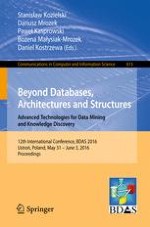2016 | OriginalPaper | Chapter
Improvement of Precision of Neuro-Fuzzy System by Increase of Activation of Rules
Author : Krzysztof Siminski
Published in: Beyond Databases, Architectures and Structures. Advanced Technologies for Data Mining and Knowledge Discovery
Publisher: Springer International Publishing
Activate our intelligent search to find suitable subject content or patents.
Select sections of text to find matching patents with Artificial Intelligence. powered by
Select sections of text to find additional relevant content using AI-assisted search. powered by
